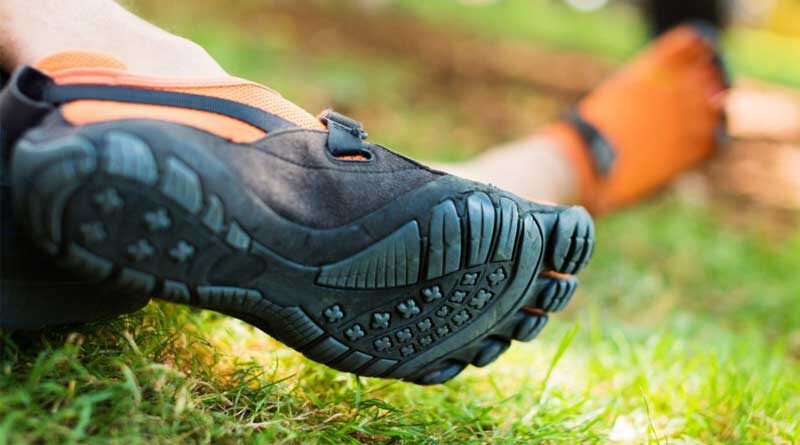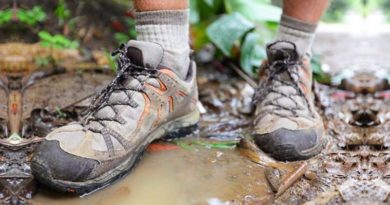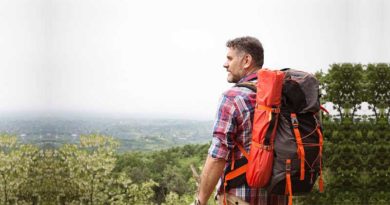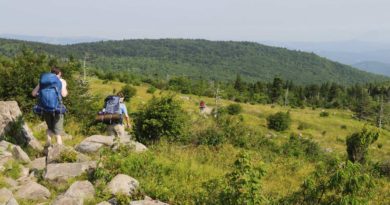Are Barefoot Shoes Good for Hiking?
One of the most significant hiking dilemmas is finding a good pair of shoes. Sure, you want something with plenty of support that offers protection to your feet. But you also want a pair of shoes that are comfortable to wear. After all, you are likely going to be spending a great amount of time walking around in them.
While some hikers prefer a shoe that provides an abundance of protection and added support, such as a boot, others argue that it is better to wear a shoe that more closely mimics the form and function of your own feet. No matter which side of the fence you are on, it is always essential to go with whatever style of hiking shoe works best for your body and the kind of hiking that you do.
What is Barefoot Shoe?
The single most defining feature of a barefoot shoe is the zero-drop design. This means that the shoe has no elevation or excess padding in the back of the shoe, located at and around the heal. Essentially, your heel is aligned with the ball of your foot. This design helps to put your body into its proper alignment. When your body is correctly aligned, you significantly reduce your risk of injury to your feet and knees, and even your hips and back.
Barefoot shoes come in a variety of designs and offer a range of functionality. For example, there are barefoot running shoes, as well as barefoot hiking boots. Ultimately, the primary purpose of these particular shoes is to engage in more natural footwear – in an anatomical sense. Because barefoot shoes mimic the natural alignment and form of your feet, they are expected to be a better option when it comes to hiking.
Can you use them for Hiking?
Barefoot shoes that are designed for hiking, or are at the very least waterproof, are great for hiking. They keep your body properly aligned during your hike and allow you to feel and adapt to your surroundings and the variances in the terrain along your path. There may be certain hikes that require a shoe that is more supportive and offers more protection in the form of a hiking boot, such as a downhill hike or a hike through deep snow. However, barefoot shoes, overall, make an excellent choice for a hiking shoe. As with any other kind of shoe, be sure to research brands that offer a high-quality product.
The Design
Did you know that there are about 26 bones, 33 joints, and over 100 muscles in your feet? That’s over a quarter of all of the bones in your body! So, it is no secret or surprise that our feet are incredibly complex on a mechanical and anatomical level. It is important for these joints, bones, and muscles to move freely, which is what happens while wearing barefoot shoes.
Barefoot shoes differ in design from typical sneakers and boots. They are shaped more like your foot – wider and flatter, than your average sneaker or boot. They are more ergonomic and closely resemble the structure of your feet allowing more movement within the foot. Rather than constricting the nerves, muscles, and bones within your foot, barefoot shoes will enable them to move more freely.
Barefoot shoes also allow the hiker to account for their ever-changing terrain. There are plenty of things that change over the course of a hike, the angle at which you are walking, the texture of the ground, unevenness, and slickness. Big, chunky boots can make it challenging to recognize and adequately adapt to these changes. Barefoot shoes allow the wearer to feel these changes and make corrections and adaptations accordingly.
Some Benefits
Plenty of research shows that barefoot shoes are effective at reducing musculoskeletal injuries, such as plantar fasciitis – a condition that has long plagued thru-hikers. Barefoot shoes have also been shown to improve the walk the people walk when they wear them. For example, runners usually switch to forefoot striking rather than relying on rearfoot striking while wearing barefoot shoes. This helps to prevent stress injuries that are caused by making contact with the ground by way of the back of the foot.
Many of the issues experienced by hikers, especially those who are thru-hiking, are connected to their feet or their legs, which makes sense considering how heavily they are relied on during a hike. The most common complaints that you will hear from hikers revolve around shin splints, bursitis in the hips and knees, stress fractures, and even Achilles tendonitis. The worst part about these injuries is that they can greatly affect your alignment, which leads to injuries in other parts of the body. Because the injury is one of the primary reasons that people abandon their hikes, it is important to take the necessary precautions to prevent an injury. Your barefoot shoes may be the best option because they decrease the chance of musculoskeletal injuries and problems.
Merrell Vapor Glove 4: My Favorite Barefoot Shoes

Weight (pair): 12 oz.
Midsole: EVA
Upper: Cordura (Mesh/thermoplastic polyurethane)
Outsole: Vibram TC5+ rubber
Merrell Vapor Glove shoes are super flexible, thin and have a Vibram sole. The upper is minimal but feels nice, comfortable and provides a little bit of protection. The toe box comes up over the top and provides nice protection against kicking rocks and stuff like that. I use these primarily for hiking on paved or well-groomed trails. Nothing very rocky! There are very minimal padding and no insole offered by these shoes. There is, however, a sewn-in insole but it’s not removable and very thin. The shoe weighs around 6 ounces, which is insanely light for hiking and backpacking.
The toe box is fairly wide and the heel fits snuggly. This combination provides a stable fit even on uneven terrain. The design is very simple and it mimics the shape of a bare foot. It features some traction on both pavement and dirt trails. Keep in mind that Vapor Glove is designed for road running with zero-drop and no cushioning. It may not be an ideal choice for most hiking trails where you need a lot of support that typical hiking boots provide. If you are planning to hike on mostly pavement and well-groomed trails then Vapor Glove can a good consideration.
What I like: Super lightweight, provide freedom of movement, good ground feel
What I don’t like: Less durable than typical hiking shoes and boots, laces are short, grip is not consistent
Final Thoughts
Hiking boots and other trekking shoes are not just meant to add support and protection to your feet. They help to keep your feet warm and dry, which is especially important if you are hiking in areas that experience heavy moisture, rainfall, or snowfall. Can barefoot shoes provide the same form of protection against the elements? In a word – yes!
Luckily, there are plenty of barefoot shoes and barefoot hiking boots that are waterproof while maintaining their zero-drop design. These thin, flexible shoes, with a wide to box and no platform, are completely safe to use during inclement weather as long as they are waterproof. You can always add insoles to help supplement the warmth, but these may defeat the purpose of the barefoot shoes, at least for some people. The insoles could compromise the flatness of the shoe.




